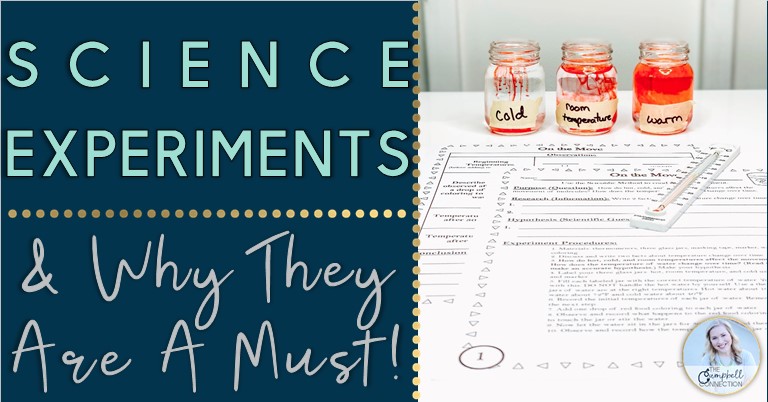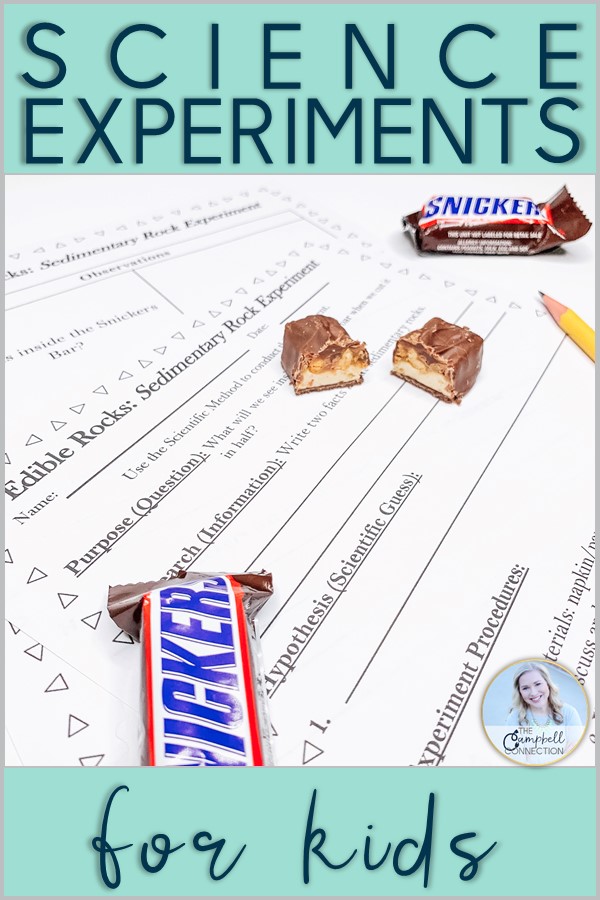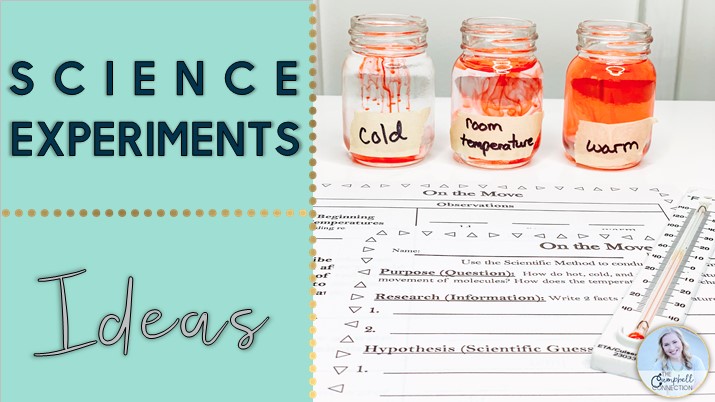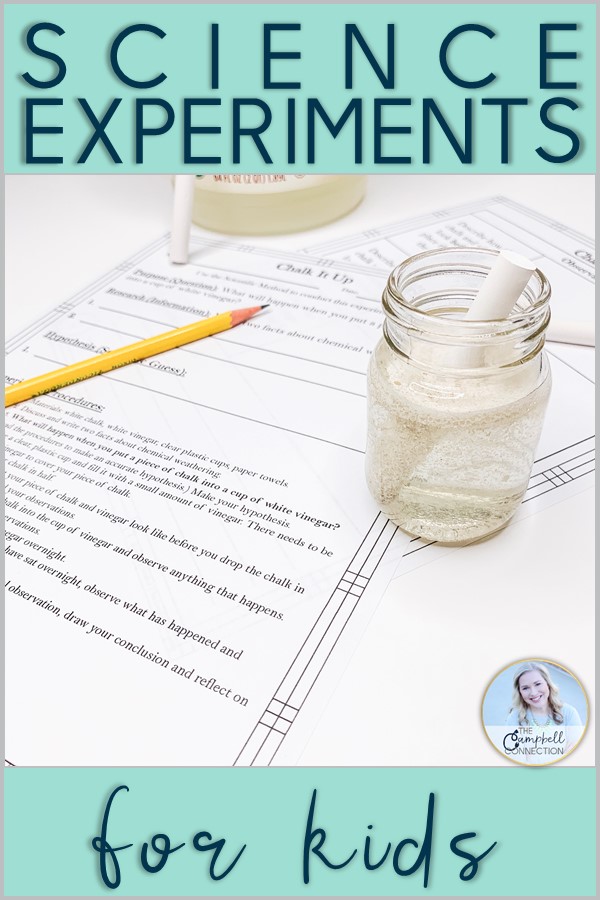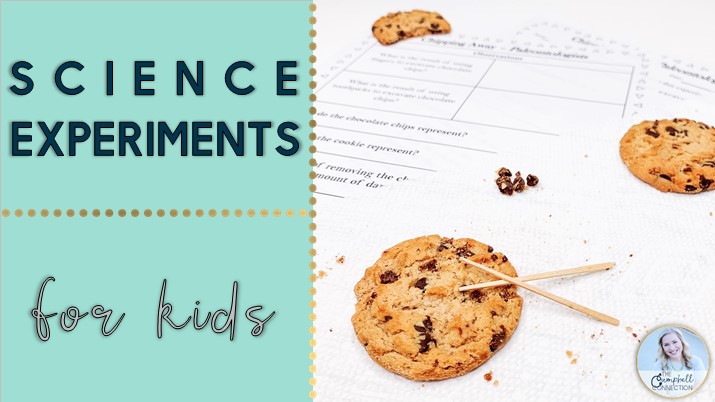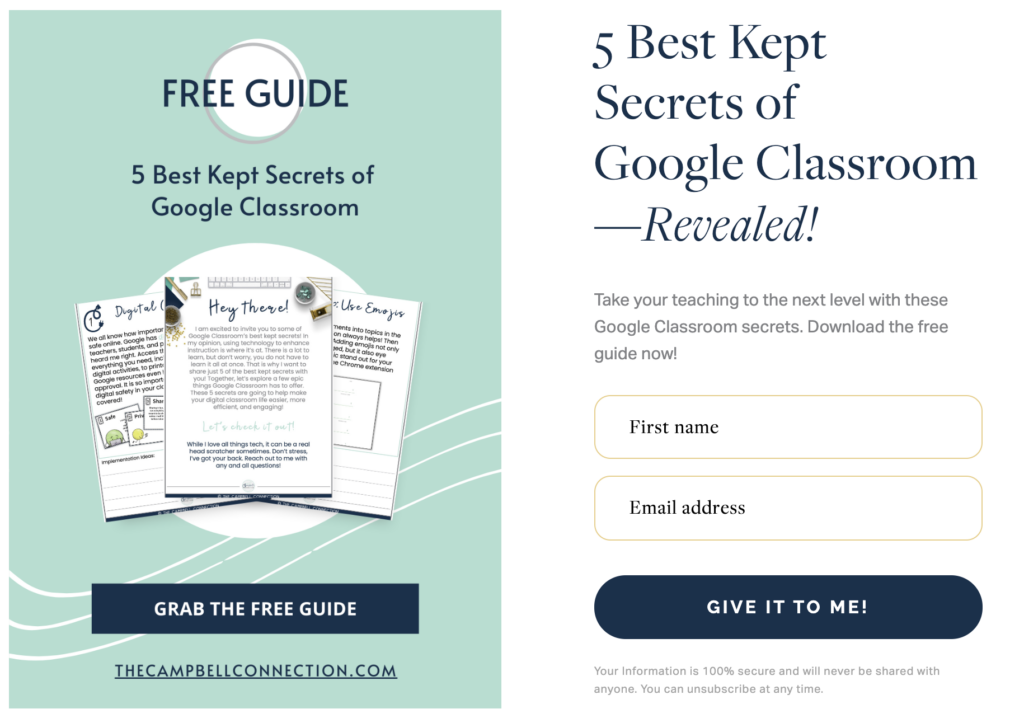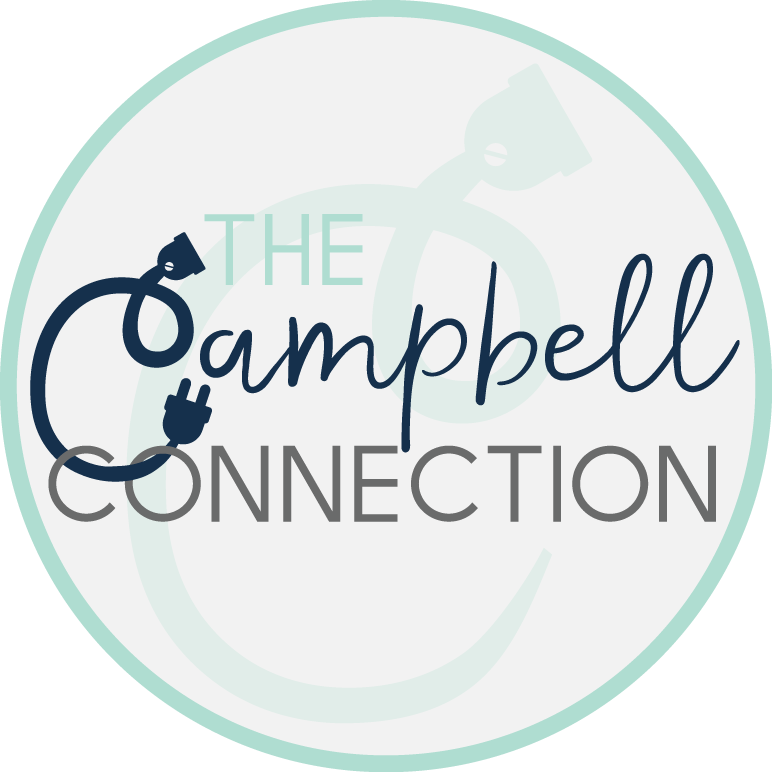Science Experiments and Why They Are A Must!
Science is either a subject you passionately love to teach or it makes you cringe with the thought of chaos. I am here to tell you why science experiments for kids are a must, and give you a few science experiments ideas along the way.
Engage your students with Science Experiments
When it comes to science experiments for kids, engagement is the buzzword, and you know in education how much we love a good buzzword. As much as I cringe when I hear overused educational jargon, engagement is a huge part of students actually retaining their learning, and science experiments are one way accomplish this. Think back to when you were in school, and while I know it might make your brain hurt, just try. Do you remember the time your teacher talked about sedimentary rocks and described the different layers of sediment? Nope, probably not, but if your teacher got out a snickers bar and cut it in half to relate the layers in a snickers to the layers in a sedimentary rock I bet you would remember that!
As much as we hate to admit it, kids do not always remember what we say, but they remember what we do and what they see and experience, and that is why science experiments are so engaging and stick with kids. Even if they can be a little messy and a lot of work sometimes.
Create Active Learners with Science Experiments at School
In order for children to truly retain information, they need to be active learners and not just passive recipients. It should be our goal as educators to give our students various experiences, and science experiments are an easy way to do that. Experiments lend themselves to active learning. Just pull your hair back, roll your sleeves up, and give your students those active learning experiences.
This science experiment on heat is a great example of an active learning experience, and it isn’t even complicated. All students need are thermometers, three glass jars, masking tape, a marker, water, and red food coloring. In order to carry out the experiment students take hot, cold, and room temperature water and fill the three glass jars, but make sure they are labeled first. Use the thermometers to test the temperatures. Once your water is ready add one drop of red food coloring into each jar of water. Then students will observe how the different temperatures of water effect the red food coloring. Now they are activity learning about how temperature difference effect water molecules. Want even more information about this science experiment on heat? Just click here!
Science Experiments Develop Problem-Solving and Critical-Thinking Skills
As teachers we know that problem-solving and critical-thinking skills are really important. They are also something that we can not just directly teach. Children have to learn these skills through the activities we give them in the classroom. Experiments are an easy way to help students learn how to problem-solve and think critically. The scientific method guides students through these very processes.
Say you are studying weathering and erosion and you give your students a cup of white vinegar and a piece of limestone (chalk) and ask them to hypothesis what will happen when they put the chalk in the vinegar. They have to use the knowledge they already have about weathering and erosion along with the materials you just gave them to critically think about a realistic hypothesis. Throughout science experiments for kids there is a lot of problem solving that takes place as they move through the scientific method. Students are collecting data, drawing conclusions, and making decisions along the way. All of this involves the skills of problem solving and critically thinking.
Science Experiments Simple
I want you to understand one final thing about doing science experiments in your classroom. They do not have to be elaborate with all the bells and whistles. Science experiments that are simple are just as impactful, like this fossil experiment where students act as paleontologists using chocolate chip cookies. All you need are chocolate chip cookies and some toothpicks, and that’s it! So, repeat after me. Simple is good too! If you often struggle with science experiments ideas I have a ton for you ready to go, and they even include the scientific method recording sheets as well! Click here to check them out. I would love to hear what some of your favorite science experiments are in the comments!
Check out what else I have to offer you! Want to learn about Google Classroom? Click here to find out the 5 Best Kept Secrets of Google Classroom!

